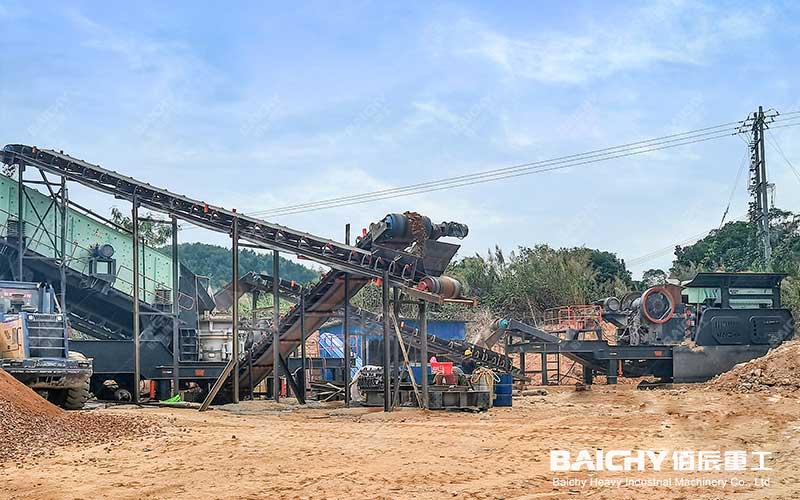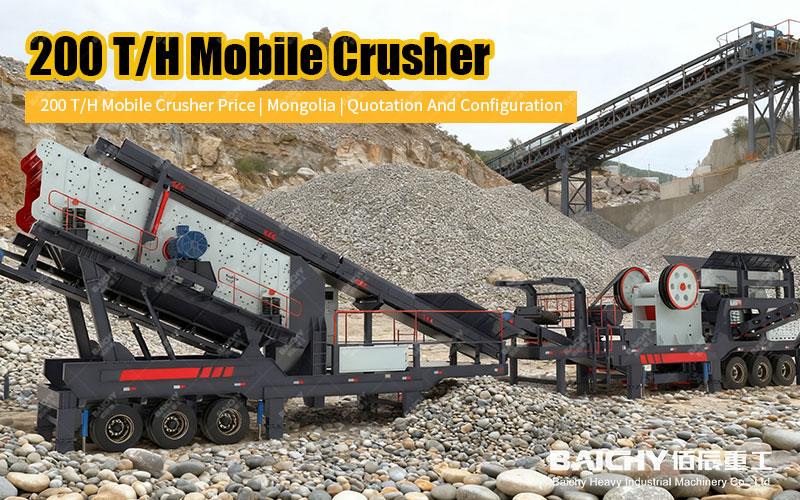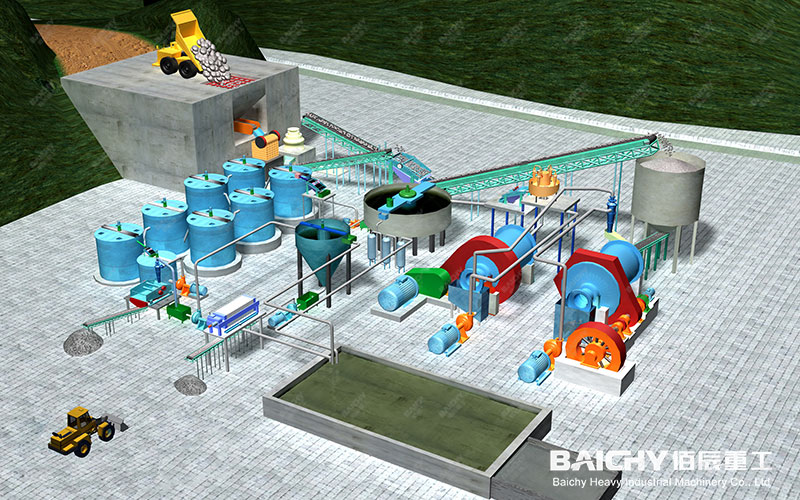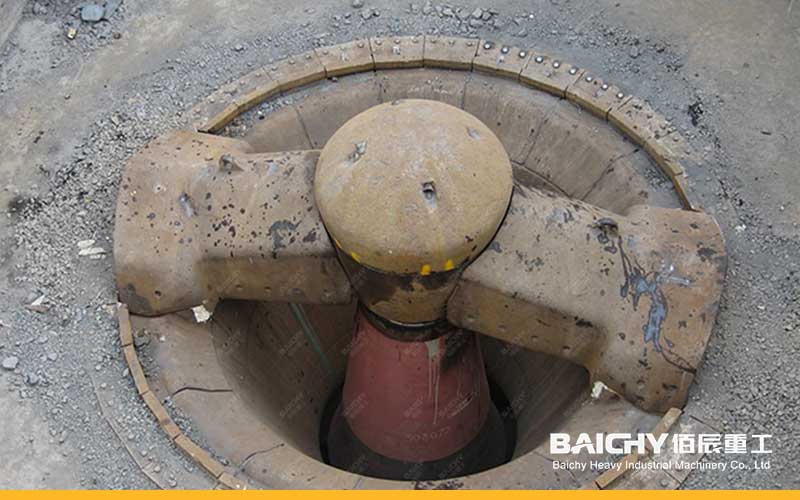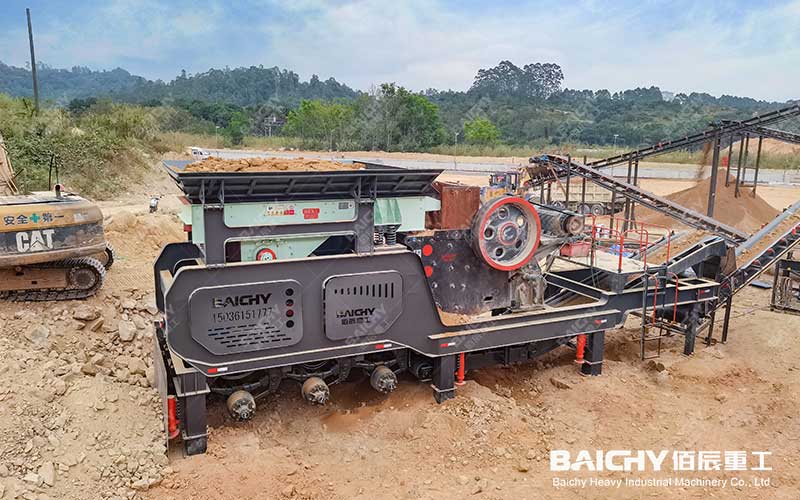
The tire-mounted mobile crushing plant integrates feeding, crushing, screening, and conveying, offering high mobility and flexibility. However, its complex structure and harsh working environment place higher demands on equipment maintenance. Effective maintenance is key to ensuring stable equipment operation, extending service life, and controlling operating costs. The following is a systematic maintenance method:
I. Daily Inspection: Prevention is Better Than Cure
Daily inspections before, during, and after work are the first line of defense against sudden malfunctions.
1. Visual Inspection and Fastener Check: Inspect the equipment for any obvious damage, paying particular attention to all bolts and nuts (especially fasteners on critical components such as the motor, crushing chamber, screen, and conveyor belt supports) for looseness.
2. Lubrication System Inspection: Check the oil level and quality at all lubrication points (such as bearings and elbow plates) for any leaks.
3. Hydraulic System Inspection: Check the hydraulic station oil level, observe the hydraulic lines for wear or leaks, and check the hydraulic cylinders for proper operation.
4. Vulnerable Parts Inspection: Quickly inspect the wear condition of vulnerable parts such as jaw plates, hammer plates, side guards, and screens, and assess their remaining service life.
5. Tire Inspection: Check tire pressure, for cuts, cracks, or abnormal wear on the tread, and remove any stones or other foreign objects embedded in the tire treads.
6. Electrical System Inspection: Check cables for damage, loose terminals, and proper functioning of instrument panel indicator lights.
II. Regular Maintenance: Systematic Health Management
Perform systematic maintenance according to equipment operating hours or cycles (weekly, monthly, semi-annually).
1. Lubrication Maintenance (Core):
◦ Regularly Change Lubricating Oil/Grease: Strictly adhere to the manufacturer's specified time intervals and oil type when changing lubricating oil in bearings, gearboxes, and other components. Mixing old and new oils will significantly reduce lubrication effectiveness.
◦ Clean Lubrication Points: Always clean grease fittings before adding new grease to prevent impurities from entering the lubrication system.
2. Key Component Maintenance:
◦ Engine: Regularly replace the air filter, oil filter, and fuel filter. Check the coolant level and belt tension. This is crucial for equipment operating in dusty environments.
◦ Crusher (Jaw Crusher/Cone Crusher/Impact Crusher):
▪ Adjust Discharge Opening: Regularly check and adjust the discharge opening size to ensure the product particle size meets requirements.
▪ Check Rotor/Moving Cone Balance: For impact crushers and cone crushers, check the rotor balance; for cone crushers, check the wear and balance of the moving cone.
◦ Screen: Check the screen tension and wear condition. Replace damaged screens promptly to avoid affecting screening efficiency and product quality.
◦ Conveyor Belt: Check the conveyor belt for misalignment, wear, or tears. Adjust the tensioning device and clean any adhering material from the idlers and rollers.
3. Tire Maintenance:
◦ Maintain standard tire pressure, avoiding excessive or insufficient pressure.
◦ When the equipment is parked for an extended period, the tires should be lifted off the ground to prevent localized deformation due to prolonged pressure.
◦ When moving the equipment on rough terrain, drive slowly to avoid puncturing the tires with sharp stones.
III. Seasonal and Long-Term Parking Maintenance
1. Winter Maintenance: Replace antifreeze, low-pour-point diesel fuel, and lubricating oil according to the temperature. After shutdown, drain the water pump and water tank to prevent freezing and cracking.
2. Long-Term Parking Maintenance:
◦ Park the equipment on a flat, dry surface.
◦ Apply rust prevention treatment to exposed metal surfaces (such as piston rods and bearings).
◦ Remove the battery, store it separately in a dry place, and charge it periodically.
◦ It is best to start the engine and run it for a period of time each month to lubricate all components.
IV. Operating Procedures and Records: Soft Maintenance is Equally Important
1. Standard Operation: Overloading is strictly prohibited. Feed material evenly and prevent uncrushable objects such as iron from entering the crushing chamber. Standardized operation is the most effective way to reduce equipment damage.
2. Establish maintenance records: Record in detail every inspection, maintenance, repair, and replacement of wear parts. This helps analyze failure patterns, predict component lifespan, and achieve predictive maintenance.
Common Problems and Solutions
• Problem: Abnormally increased equipment vibration.
◦ Possible causes: Loose fasteners; uneven wear of wear parts; rotor/hammer imbalance; unstable foundation.
• Problem: Overheating bearings.
◦ Possible causes: Poor lubrication (insufficient oil or poor oil quality); damaged bearings; overly tight installation.
• Problem: Sudden drop in output.
◦ Possible causes: Uneven feeding or blockage; screen blockage; severe wear of wear parts; loose V-belt.
The maintenance of tire-mounted mobile crushing plants should follow the principle of "prevention first, combined with control." By establishing a four-pronged maintenance system that integrates daily inspections, regular maintenance, standardized operations, and detailed records, equipment failure rates can be significantly reduced, ensuring the continuous and stable operation of the production line and ultimately creating maximum value for the enterprise.


